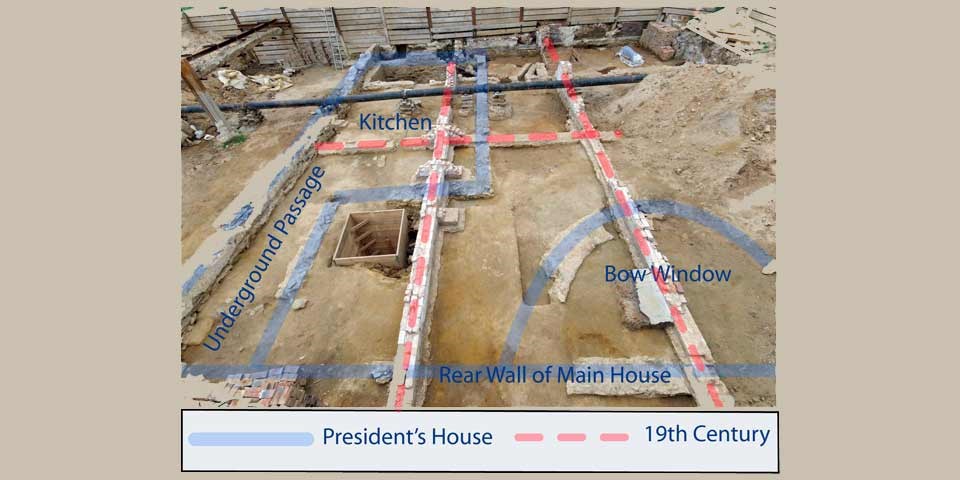Recovering the Past
The historical past exists independently of our knowledge or our perceptions - in fact, the past has sometimes been described as "a foreign country." How then, do we recreate a past that is distant from us and in many ways unknowable? The simple answer is: through the collection and analysis of as much information (data) as we can possibly find pertaining to the past. Historians, for example, search out old documents - letters, diaries, deeds, and census information, to name a few such sources - relating to specific people and times. Yet written sources, most of those that have survived at least, were produced by or for society's elite. The poor and the enslaved rarely left a written record and such individuals go unmentioned in documents produced by their social "betters," other than as figures in a ledger or numbers in tax and census records.
We are fortunate, then, that surviving historic records associated with the President's House identify the enslaved African-American residents and provide some biographical information on these individuals. On the other hand, we know little about their daily lives, and it is in this respect that archeology becomes critical in recreating a more complete, and inclusive, history of the people that lived and labored here.
Archeology of the President's House Site
Archeology is the study of the past through material remains, the everyday objects that people lost or discarded, as well as the places they inhabited and the spaces through which they moved. Wherever people live or work or play, they leave some physical trace of themselves - a sewing needle that falls through a gap in the floorboards, a child's toy lost and forgotten in the yard, a broken dish tossed down an abandoned well. Through excavation and the analysis of recovered artifacts, we can often learn about the kinds of food people ate, the clothes they wore, some of the ways in which they entertained themselves, and even the diseases they suffered from.
What can we expect to find here at the President's House Site? Research has indicated that nineteenth and twentieth-century development of the property has probably destroyed much of the physical evidence.The construction of deep basements, for instance, has in all likelihood eradicated all or nearly all of the late-eighteenth-century ground surfaces, as well as most of the building foundations and footings. What may have survived later development are the lower portions of shaft features, historic pits generally lined with brick or stone. These pits were used for a variety of purposes, but the most commonly encountered shaft features are privies (outhouses) and wells. Other less commonly found shaft features include ice pits, cisterns, dry wells, and other specialized structures. Shaft features often served a secondary function as receptacles for disposal of trash from adjacent homes and businesses. They sometimes contain household items that were deposited while the feature was in use or after it was abandoned.
When deposits of household trash are found within these deep features, the study of this material can reveal in great detail aspects of daily life that are otherwise absent in historical documents. Such deposits can illuminate the lives of all strata of society. A partial listing of the artifacts we might expect to find here would include objects such as broken ceramic dishes, bottles, pins, needles, animal bone, jewelry, and clothing items like buttons and buckles. Sometimes, if the conditions of preservation permit, we can recover pieces of cloth, seeds from the fruits or vegetables consumed, and even the remains of parasites that plagued their human hosts.
Putting it all together
The recovery of archeological remains from the site can then help us to address some questions about the people who lived here: Can we identify artifacts associated with enslaved people who lived and worked at the President's House, and if so, how do these material goods compare to those used by free persons occupying the site? What might these objects have meant to the people (enslaved and free) who owned and used them? Did the objects possessed by enslaved people, and the spaces in which they were used, help them to maintain an identity separate and distinct from the free occupants of the President's House? Through the analysis of the site's material remains - coupled with information from historic research and input from scholars, students, and the local community - we can begin to answer some of these questions, formulate others, and ultimately draw inferences about the everyday life of the enslaved community that lived and worked at the President's House Site.

